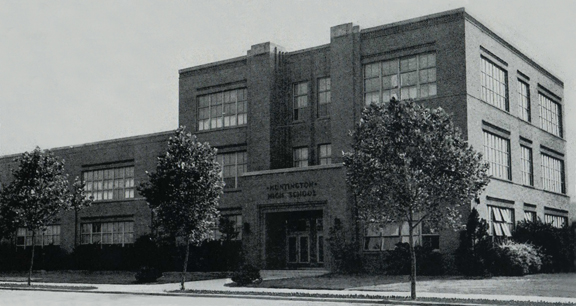

Huntington High School Building “In most of the Southern states, services to black schools have been confined largely to the program of increasing and improving physical facilities. This effort should continue but, at the same time, a program for intelligent use of available facilities should be well established.” |
||||||||||||||||
|
||||||||||||||||
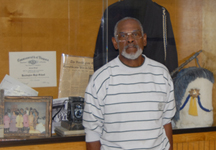 Cleveland Mayo at the Huntington display cases at Huntington Middle School |
||||||||||||||||
“While we came from three different elementary schools, during our time at Huntington High School we would become one great family. |
||||||||||||||||
In 1936, a “new” brick high school building was built in Newport News at the Thirty-fourth Street site. When William Robinson, director of the Secondary School Study, was determining which schools would participate in the program, this structure certainly strengthened Huntington High School’s bid. As described in Huntington High School: Symbol of Community Hope and Unity, |
||||||||||||||||
“The new high school building was an attractive brick building with twenty-five classrooms located on a ten-acre site. It had two stores with four classrooms located on the third floor above the library. . . . Included among the twenty-five classrooms were chemistry and biology labs, sewing rooms, foods lab, a vocal music room, library, cafeteria, principal’s office, and reception area. |
||||||||||||||||
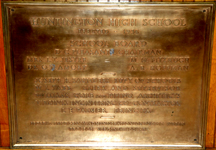 |
||||||||||||||||
Clearly, the community was providing financial support for the education of blacks in the Newport News community. Inequities remained in terms of teachers’ salaries and curricular materials, and the motives for the building of this magnificent structure must be questioned. Nonetheless, the brick building represented a tangible gesture of community support that generated great pride and, with the community-school philosophy initiated by Dr. Palmer, re-affirmed a common feeling among the black community that Huntington High School was “our high school.” |
||||||||||||||||
"Huntington High School was a community-centered school. The success of the high school was due largely to the strong bond between school and community. Professor Palmer strengthened these ties. He aggressively pursued this relationship by taking advantage of all available community resources, encouraging and nurturing the spirit of cooperation and good will. This unique relationship was reflected in many tangible ways by businesses that supported the school. In conversation, citizens proudly referred to Huntington High School as "our high school." |
||||||||||||||||
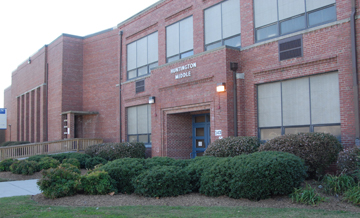 Since 1981, the Huntington High School building has served as a middle school. From 1971-1981, the building functioned as the Huntington Intermediate School. |
||||||||||||||||
Description of Huntington High School in Rockefeller Foundation documents:
|
||||||||||||||||
The Spirit of Huntington |
||||||||||||||||
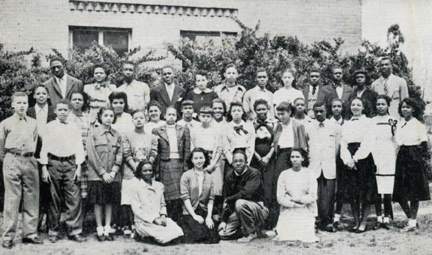 |
||||||||||||||||
With happy memories of days at |
||||||||||||||||

an institutional member of the International Coalition of Sites of Conscience
Museumofed@gmail.com

